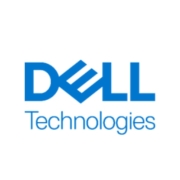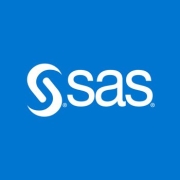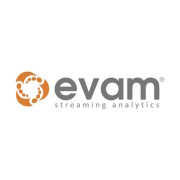Streaming Analytics processes and analyzes data continuously as it is generated, enabling businesses to derive insights in real-time. The solution empowers organizations to make immediate data-driven decisions and respond swiftly to dynamic market conditions.
This technology handles vast amounts of data in motion and offers a platform for continuous computation of results using that data. Designed for time-sensitive business operations, it supports use cases such as fraud detection, predictive maintenance, and personalized customer experiences. Enterprises benefit from enhanced operational efficiencies and competitive advantage through its implementation.
What are the critical features of Streaming Analytics?Industries like finance, telecommunications, and retail deploy Streaming Analytics to gain actionable insights and detect potential issues before they escalate. These sectors benefit significantly from the solution's ability to process high-frequency data with precision. It is also used in manufacturing for monitoring equipment and maintaining optimal performance through predictive analytics.
Organizations gain a competitive advantage, improved customer experiences, and greater efficiency by using Streaming Analytics. This technology allows for quick adaptation to changes, promoting better business outcomes and sustained growth.
| Product | Market Share (%) |
|---|---|
| Apache Flink | 14.8% |
| Databricks | 12.5% |
| Confluent | 8.5% |
| Other | 64.2% |

















































Streaming analytics gives companies the ability to analyze data as soon as it becomes available. With immediate real-time data at their fingertips, businesses can identify new revenue streams, resulting in an increase in profits. Other advantages include new customers, improved customer service, and also a way to analyze risks before they even occur. Because data is processed before it even lands in a database, streaming analytics supports much faster decision-making than using traditional data analytics technologies. Streaming analytics also guarantees security protection by detecting threat patterns and their risks, since it provides security monitoring of network and physical assets. By using real-time analytics, organizations can both predict and detect significant business events the moment they occur, making it possible to minimize risk while simultaneously maximizing gains.
As big and fast data proliferates and more data streams are generated, companies are relying on real-time analytics more and more. Real-time data monitors any number of event streams and event data of any kind, allowing for a quick response to events at the very moment they happen - or even sooner when using predictive models.
For companies, real-time analytics can help businesses comprehend what’s happening across their business units, improve the relationship between sales and marketing, enhance workflows, understand customer behavior, and much more. Real-time data can be used for nearly every type of business and industry ranging from financial services, healthcare, information technology, advertising, and transportation.
Streaming Analytics empowers you to process data in real time, allowing your business to make instant decisions based on current information. It analyzes data as it is created, ensuring timely insights that help refine strategies and operations. For instance, fraud detection systems rely heavily on Streaming Analytics to identify fraudulent transactions as they occur, preventing financial loss.
What industries benefit the most from Streaming Analytics?While many industries benefit, sectors like finance, telecom, e-commerce, and logistics utilize Streaming Analytics to enhance operational efficiency and customer experiences. In finance, it is crucial for monitoring transactions and detecting fraud. In telecom, it optimizes network performance by analyzing data traffic in real time. E-commerce platforms use it to personalize shopping experiences through dynamic recommendations.
What are the key features to look for in a Streaming Analytics solution?When selecting a Streaming Analytics solution, focus on scalability, integration capabilities, and ease of use. Scalability ensures the solution can grow with your data needs. Integration with existing systems is vital for seamless data flow. User-friendly interfaces and robust support for a variety of data sources enhance operational efficiency, allowing you to concentrate on deriving insights rather than technical complications.
How do Streaming Analytics and batch processing differ?Streaming Analytics processes data in real-time as it is generated, ideal for time-sensitive applications requiring immediate insights. In contrast, batch processing compiles and processes data at scheduled intervals, suitable for tasks that are not immediately time-sensitive like generating monthly reports. Knowing your business needs is crucial in determining which method or combination of both best suits your objectives.
What are common challenges faced when implementing Streaming Analytics?Implementing Streaming Analytics comes with challenges such as data integration, latency issues, and managing large data volumes. Integrating disparate data sources can be complex and requires considerable expertise. Latency can affect the timeliness of insights, necessitating high-performance infrastructure. Furthermore, managing and storing vast volumes of streaming data demands efficient and scalable solutions. Overcoming these challenges often involves investing in the right tools and skilled personnel.